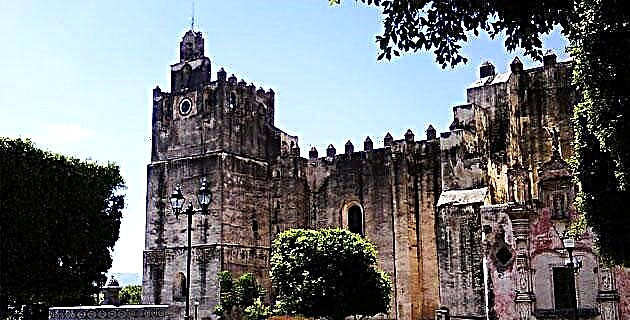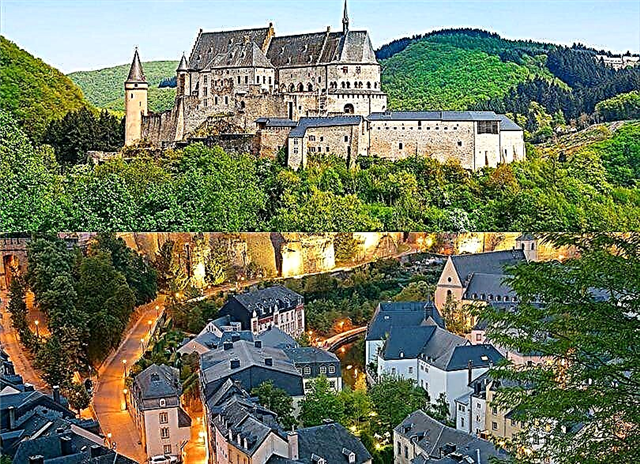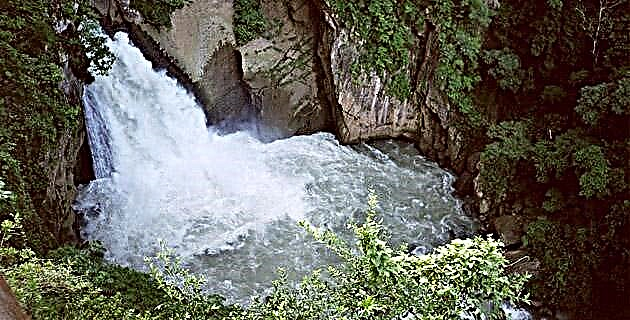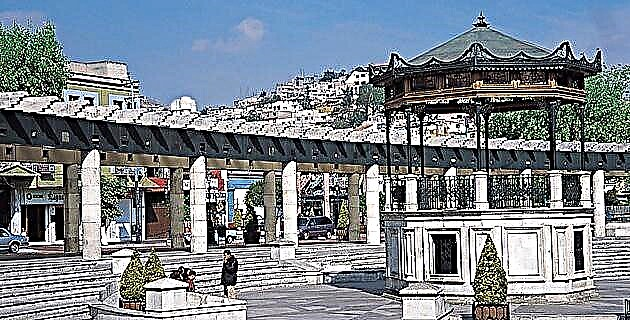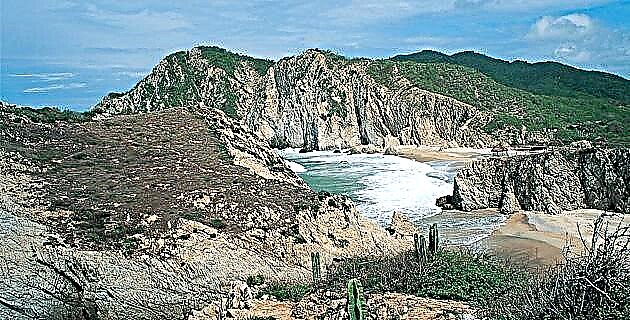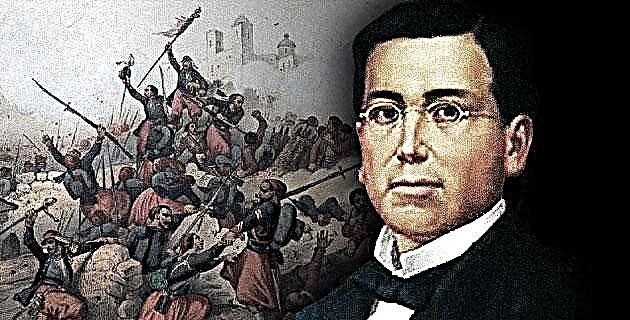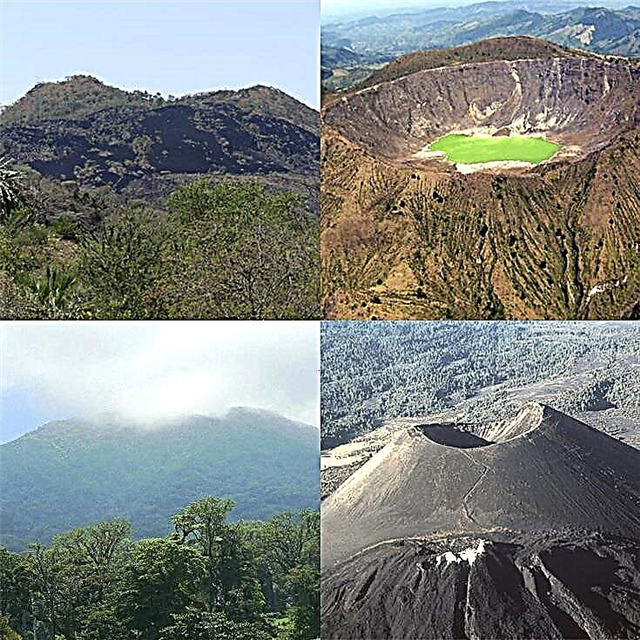They are 14 peaks that, beneath their superficial beauty, keep fire, boiling lava and vapors that they emit occasionally to remember that they have not died.
1. Popocatepetl
El Popo is the second highest mountain in Mexico and the highest active volcano in the country. The immense mouth has a diameter of 850 meters and it was without vomiting between 1921 and 1994, when it began to throw dust and ash, alarming the nearby populations. Its intermittent activity lasted until 1996. On the north side of the mountain there is a second crater, called Ventorrillo, which is still being debated whether it is another mouth of Popocatepetl or a different volcano. Either way, two mouths eat and vomit more than one; Fortunately, they have been quiet since the 1990s.
2. Ceboruco Volcano
This Nayarit volcano rises 2,280 meters above sea level, about 30 km from Ixtlán del Río. Its last eruption occurred in 1872, leaving a trail of volcanic rocks in a sector of its cone. Around the volcano there are plantations of tobacco, corn and other vegetables that provide a nice green carpet for the silent monster. The Black Giant of the natives is formed by two superimposed craters. Occasionally it emits a fumarole, announcing the possibility of future eruptions. People frequent it to practice mountain sports and entertainment, such as hiking, cycling and camping.
3. Fuego de Colima volcano
It is the most restless colossal beast in all of Mexico, since in the last 500 years it has registered more than 40 eruptions, the last very recently. It rises 3,960 meters above sea level on the border between the Mexican states of Colima and Jalisco. On the eastern side it has two old "sons" that were generated during very ancient eruptions. In 1994 he caused great distress when the chimney plug exploded, generating a terrifying noise. It is always warning that it is alive, at least releasing huge puffs of gas. Volcanologists are very aware of it and the curious do not waste an opportunity to take a look as closely as they can.
4. Cerró Pelón Volcano
It is understood that this desert volcano located near Guadalajara bears the name of Cerro Pelón; What is not very clear is why it is also called Cerro Chino. In any case, this volcano is one of several in Jalisco's Sierra de Primavera and from time to time it warns about its vitality by emitting fumaroles. Within its 78 km diameter caldera it has several mouths. In its known history there are no recorded eruptions. The last one is believed to have occurred 20,000 years ago, when it woke up to give birth to the nearby Colli volcano.
5. Cerro Prieto volcano
This volcano is present in the daily life of Mexicans and other Baja Californians, helping to provide them with electricity, since steam that moves the turbines of the Cerro Prieto geothermal power plant, one of the largest in the world, comes out of its depths. Near the volcano and the power station is the Vulcano lagoon and the name of the Roman god of fire and volcanoes could not be more appropriate for the place, with its fumaroles and boiling pools. The summit of the Cerro Prieto volcano is at 1,700 meters above sea level and to see it up close you must access the highway that connects the cities of Mexicali and San Felipe.
6. Evermann volcano
The islands that make up the Archipelago of Revillagigedo sprang up due to volcanic eruptions. One of them is Isla Socorro, 132 square kilometers, a territory under the control of the Mexican Navy. The highest point of the Socorro Island in Colima is the Evermann volcano, which has a prominence of 1,130 meters, although it comes from the deep sea, since its bases are 4,000 meters below the oceanic surface. Its main structure has 3 craters through which fumaroles emerge. If you are passionate about volcanoes and you go to Colima to see the Evermann, you can also take the opportunity to enjoy the attractions of the Revillagigedo Archipelago, such as the observation of marine life and sport fishing.
7. San Andrés volcano
This Michoacan volcano erupted in 1858 and remained quiet for almost 150 years, showing signs of life again in 2005. It stands 3,690 meters above sea level in the Sierra de Ucareo, being the second highest peak in Michoacán, after 4,100 meters above sea level. Pico de Tancítaro, another volcano in the state. It emits steam jets that are used for the generation of geothermal energy. In addition, it is a tourist attraction since on the route there are some hot springs stations, such as Laguna Larga and El Currutaco. Many tourists who go to the lagoon to the hot pools and to rest in the cabins or to camp, come to admire the somewhat restless beast.
8. El Jorullo Volcano
Just as Paricutín stunned the inhabitants of Paricutín and San Juan Parangaricutiro when it seemed to come out of nowhere in 1943, El Jorullo must have produced a similar impression on the surrounding inhabitants when it emerged from the ground on September 29, 1759. It is not very surprising, since both Michoacan volcanoes are only 80 km apart. The days prior to the birth of El Jorullo were very active, according to the chronicles of the 18th century. There was high seismic activity and once the volcano erupted, it remained active until 1774. In the first month and a half it grew 250 meters from the cultivated area it destroyed, just like its brother Paricutín 183 years later. He has been quiet for the last 49 years. In 1967 it launched fumaroles, after in 1958 it had had a moderate eruption.
9. Villalobos Volcano
It is one of the least supervised active volcanoes in Mexico, sheltered in its remote location. The Mexican island of San Benedicto, in the remote and uninhabited Archipelago of Revillagigedo, Colima, is a little known territory, like almost the entire island system. The island of San Benedicto, 10 km2 surface, in a volcano, with the typical shape of volcanic craters. The little that is known about this island-volcano is that it erupted between 1952 and 1953, extinguishing almost all the flora and fauna of the place. It has been off since then and the few who have seen it are the volcanologists and divers who go to the island more aware of spotting a giant manta ray or a silky shark.
10. Chichonal Volcano
In 1982, this volcano was on the verge of causing a wave of panic in Chichonal, Chapultenango, and other nearby Chiapas towns. It all started on March 19, when the sleeping giant woke up and started throwing stones, ash and sand. On March 28 there was a 3.5 degree earthquake, followed by more eruptions. The water in the rivers began to heat up and smell like sulfur. On April 3 the earth looked like a wobbling jelly, with up to one shaking every minute. When the mini quakes stopped, the volcano erupted. The ashes began to reach the cities of Chiapas and neighboring states. The villages went dark and the eviction accelerated. Bishop Samuel Ruiz broadcast a message to reassure the public, who were already thinking about the end of the world. Little by little the monster began to calm down. It currently emits fumaroles and the people of Chiapas take tourists to see the cause of their panic and its beautiful lagoon.
11. Red Collapsed Volcano
Near the town of Zacatepec there are 3 "collapsed" volcanoes. The smallest is the White collapsed volcano, followed by the Blue collapse in size and the largest of the 3 brothers is the Red collapse, already reaching the town of Guadalupe Victoria. Of the 3, the one that shows activity is the red one, launching fumaroles that the locals call the «chimneys»
12. San Martín Volcano
This volcano from Veracruz rises 1,700 meters above sea level in front of the Gulf of Mexico, constituting its summit an exceptional viewpoint of the Mexican Atlantic. Its oldest recorded eruption occurred in 1664. However, the first time it really scared the Spaniards and Mexicans who inhabited the viceregal towns was on May 22, 1793, when it was so dark in the middle of the morning that torches and torches had to be lit. other means of illumination. It manifested itself again in 1895, 1922 and 1967, this last time, emitting fumaroles.
13. Tacaná Volcano
This impressive volcano that borders between Mexico and Guatemala rises 4,067 meters above sea level and in its building there are 3 superimposed calderas, between 3,448 and 3,872 meters above sea level. The most spectacular view of the Tacaná is from the Chiapas city of Tapachula. In 1951 it became active and in 1986 it returned to warn. Until recently, sulfurous currents flowed down its slopes.
14. Paricutin
It is part of Mexican mythology and legend, since in 1943 he forced to hastily modify the Geography textbooks to remember the prodigious truth, now forgotten, that a volcano can sprout and rise from normal soil, only shortly before covered with cornfields. He buried the towns of Paricutín and San Juan Parangaricutiro, leaving in the latter only the testimony of the church tower above the ashes. From Nuevo San Juan Parangaricutiro, "the town that refused to die," they take visitors to see the mountain that terrified them and that now provides them with economic aid through tourism.
Did you know these facts and stories about active Mexican volcanoes? What do you think?
Mexico guides
The 112 Magical Towns of Mexico
The 30 best beaches in Mexico
25 Fantasy Landscapes of Mexico

